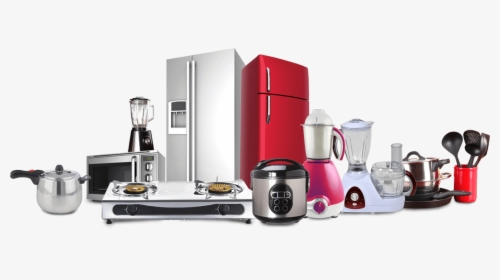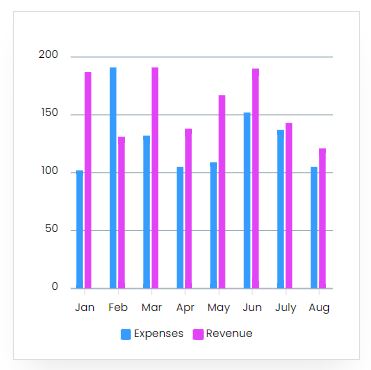Project Report For Kitchen Appliance
Introduction
Project report for Kitchen Appliance is as follows.
Home appliances are powered physically and electrically and carry out household and kitchen tasks like cooling/heating, cleaning, or cooking. White goods, kitchen appliances, consumer goods, or brown goods are all terms used to describe these household appliances.
Among the kitchen appliances are juicers, electric mixers, meat grinders, coffee grinders, deep fryers, herb grinders, food processors, electric kettles, waffle irons, coffee makers, blenders, and dough blenders, as well as toasters, rice cookers, and stoves with ovens, microwaves, and induction cooktops. Dishwashers, water heaters, washing machines, garbage compactors, refrigerators, air conditioners, lighting systems, and even water pumps are an additional kitchen and home equipment.

A coil of copper wire known as Litz wire, a collection of numerous smaller insulated wires connected in parallel, and a cooktop made of copper, glass, nonmagnetic stainless steel, or aluminum are all needed for an induction cooktop. The inverter circuit provides high-frequency power at 24 kHz for alternating current. In addition, a ferromagnetic disc, a fan cooling device for the cooktop, and a circuit are needed.
In order to operate a microwave oven, it needs a high-voltage power source, an electronic power converter, a high-voltage capacitor, a cavity magnetron, a magnetron control micro controller, a wave guide, a cooking chamber made of metal, a turntable or metal wave guide stirring fan, and a digital / manual control panel with either an analogue dial-type or digital timer.
Project Report Sample On
Kitchen Appliance
Get Completely Custom Bankable Project Report
The coil of copper wire used in induction cooktop assemblies is positioned beneath the cooktop, which might be constructed of copper, glass, nonmagnetic stainless steel, or aluminium. Under the cooktop is where the coil power supply unit, which includes a transformer, inverter circuit, and other components, is located.
Additionally, a fan cooling unit with a thermostat is offered to control both cooking and cooktop overheating. There is a ferromagnetic disc that serves as a standard hotplate. Each component is put together and tested in accordance with the design requirements.
The parts and sub-assemblies of a microwave oven are assembled by fitting them into a metal housing and a cooking chamber. These components and sub-assemblies include a high-voltage power source, a transformer or electronic power converter, a high-voltage capacitor, a magnetron, a magnetron control circuit, a short wave guide to couple microwave power from the magnetron into the cooking chamber, etc.
The entire circuit is connected, a turntable or metal waveguide stirring fan is installed, and a digital or manual control panel with an LED or LCD display is used to operate the system. In the production process, the cooking chamber is made of sheet metal, and the magnetron, control circuit, and other components are assembled.
Housing, motor, blades, and a food container are the main components of a food processor, mixer grinder, blender, kneader, etc. The bowl is typically composed of stainless steel, aluminum, or clear acrylic. Vibration dampers hold a fan-cooled electric motor into the housing, and a small output shaft enters the upper housing and meshes with the blade assembly.
The bowl is either attached to the blades by a belt or gears, or it is fitted around the shaft using a rubber coupling. A lid with a “feed tube” is attached to the bowl, and various kinds of blades are created for cutting, blending, beating, kneading, shredding, or slicing activities.
Market Potential Of Kitchen Appliance
The kitchen appliances market was worth $237.3 billion in 2019 and is predicted to be worth $377.70 billion by 2027, growing at a 6.0% CAGR from 2020 to 2027.
Expenses

Product Cost Breakup

Reveneue Vs Expenses

Market Trend

According to one survey, Indian customers buy over ten million choppers, food processors, mixer grinders, hand blenders, and other kitchen appliances each year, with sales increasing by 5%. The mixer grinders category is the most popular equipment within food preparation, accounting for 85% of volume and about $372 million in revenue.
Kitchen appliances are now found in practically every urban and semi-urban household, restaurant, fast food outlet, and eatery. They’re also popular in canteens, hospitals, cafeterias, and laboratories. Products span from domestic kitchens to commercial kitchens in big hotels, restaurants, and eateries, as well as public facilities such as canteens and hospitals.
The kitchen appliance industry is a fragmented market in terms of the competitive landscape, with the top 35 players with well-known brands accounting for more than 55% of the market’s value. There are more than 60 SME businesses selling small equipment, mostly in the food preparation and culinary industry, such as pressure cookers and roti makers.
MNCs and other electronics and other durable goods companies are expanding into the kitchen market. Despite the rivalry, there is a sizable population in the appliances industry to serve both domestically and abroad. The demand for consumer appliances in India is primarily driven by rising disposable incomes, simple consumer financing, and an expanding labor force, creating the fantastic potential for both domestic and foreign businesses.

